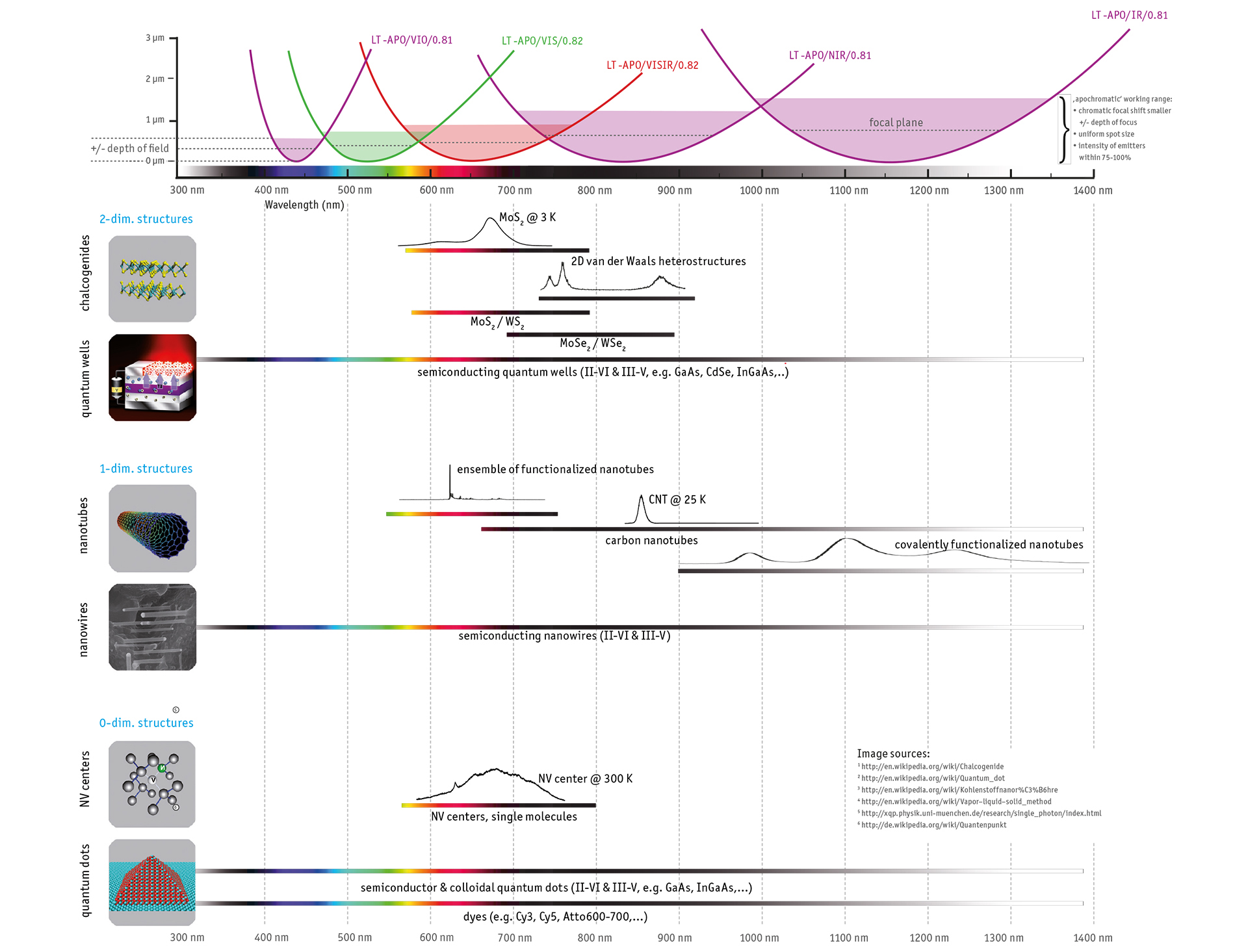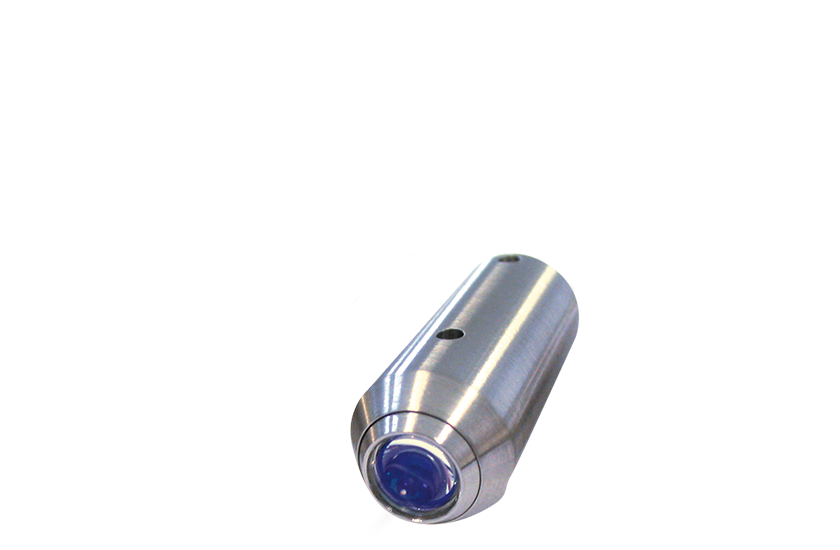Cryogenic Compatible Apochromatic High NA Objectives
maximum collection efficiency, low focal displacement

Many high spatial resolution spectroscopy measurements, such as confocal micro-luminescence, fluorescence & micro-Raman require cryogenic temperatures, where conventional room temperature objectives cannot be employed.
Now, attocube offers two versions of apochromatic objectives for low temperature operation. Whereas one version features high numerical apertures (NAs) of 0.81-0.82 within six color bands ranging from the UV to the IR, the other line of apochromatic objectives boosts the working distance to 5.0 mm while maintaining high NA of 0.63-0.65.
The key features of all apochromatic objectives are their small chromatic shifts. Optimized for diffraction-limited performance in the respective design wavelength ranges of 350-395, 405-470, 465-590, 565-770, 700-985 and 985-1350 nm, the LT-APOs keep the focal plane within one depth of focus and thus ensure both uniform spot size and constant collection efficiency for all colors within the apo-range. The series of LT-APO-LWDs combine this performance with a long working distance. Take a look at the overview on the right side to see how your application can benefit from the new LT-APOs and LT-APO-LWDs!
The operation of both lines is optimal when paired with RT-APO broadband collimators, designed exclusively to match the collimated beam to the clear apertures of LT-APOs and LT-APO-LWDs and to provide highest transmission of 99% over broad spectral ranges..
To illustrate the main advantages, see below performance simulations compared between an aspheric objective and a LT-APO. The spectra are plotted for different focal planes, each set by monochromatic best focus for a given wavelength (see the 3rd graph on the right for the so-called chromatic focal displacement or focal shift of both objectives which describes how the focal plane depends on the wavelength used to identify best focus). In actual experiments, the focal plane is defined by the user with a wavelength of his choice. The effect of different choices of alignment wavelengths (in equidistant steps on the axis 'monochromatic focal plane') is exemplified by the simulations in the two graphs on the left for the spectrum of negatively charged NV-color centers in diamond. Compare the spectra you would measure with a single aspheric lens (left panel) and the LT-APO-VISIR/0.82 (central panel), both operated in best monochromatic focus. Note the faithful spectra obtained with the LT-APO-VISIR/0.82 for a broad range of alignment wavelengths!




